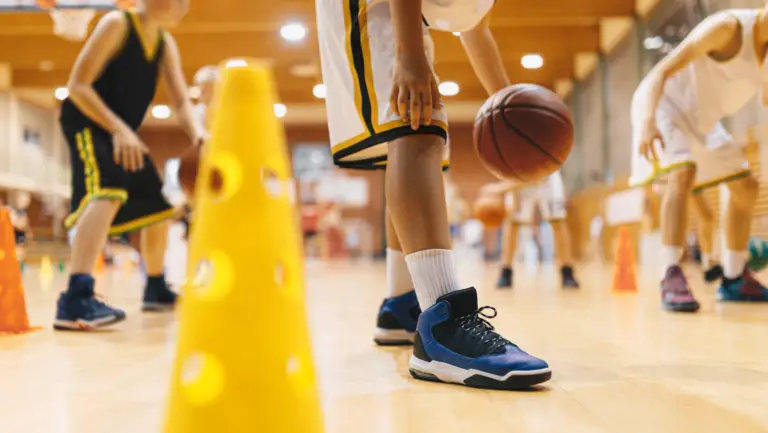When it comes to children’s interactions, knowing ‘What to Do When Your Kid Touches Another Kid’ is crucial. Read our article for compassionate and effective ways to respond.
Understanding Children’s Interactions and Setting Clear Boundaries
In navigating the dynamics of children’s interactions, it’s key for you to understand the nuances of age-appropriate behavior and to communicate clear boundaries. This empowers kids to foster healthy relationships founded on consent and respect for personal boundaries.
Recognizing Age-Appropriate Behavior and Red Flags
Age-appropriate behavior: It’s normal for children to be curious and to engage in exploratory play, which can sometimes include innocent physical touch. When considering behaviors, factors such as the child’s age and developmental stage are crucial. Red flags to watch for include any actions that are forceful, secretive, or that one child insists on despite another child’s discomfort.
Teaching Consent and Personal Space
Consent is fundamental. Even from a young age, children should understand the importance of asking for and receiving permission before engaging in physical contact. You can reinforce this by practicing with them, through role-playing games or simple daily interactions. Setting up clear boundaries teaches your child not only about their own space but also about respecting others.
Building Empathy and Respect for Others
Encouraging your child to perceive how their actions affect others is key in developing empathy. Discuss feelings and perspective-taking, helping them to recognize and respond appropriately to social cues. When they act with empathy and respect, positive reinforcement can be a powerful tool, guiding them toward respectful interaction and understanding the significance of personal boundaries.
Navigating Challenges and Support

When your child touches another child, it’s crucial to navigate this challenge with supportive strategies that emphasize teaching over punishment and encourage respect for personal boundaries.
Handling Inappropriate Behavior
Addressing Inappropriate Touch: It’s important to act swiftly if your kid touches another kid inappropriately. Start by separating the children to prevent further incidents. Then, calmly and clearly, discuss why certain behaviors are unacceptable and the importance of personal space and consent. It’s helpful to reinforce the idea that everyone’s body belongs to them and that asking permission before physical interactions is essential. For instance, explaining that hugs and high-fives should only be given when both parties agree.
Discipline and Positive Reinforcement
Balancing Discipline With Positivity: Discipline should aim to teach, not punish. Focus on consequences related to the misbehavior, such as a brief time-out or the loss of a privilege, to highlight the seriousness of respecting boundaries. Following up with positive reinforcement for good behavior is also key. Praise should be given when your child is observed respecting others’ space, thus promoting continued proper behavior.
Using phrases like “I noticed you asked before hugging your friend, that was very respectful,” can serve as validation and encourage your child to continue this behavior.
When to Involve a Therapist or Counselor
Seeking Professional Help: If repeated incidents occur or if you observe signs of anger, trauma, or sexual behaviors that seem developmentally inappropriate, consider consulting a therapist or counselor who specializes in child behaviors. It’s beneficial to have a professional assess the situation to provide tailored support for both the child and the family. This step is also crucial if you suspect that your child may be exhibiting signs of having been a victim of inappropriate touching.
Professionals can offer strategies that play to your child’s strengths and help them make amends if their actions have hurt others, as well as support the whole family in problem-solving and coping with emotions related to these incidents.
Legal and Safety Considerations

When your child is involved in an incident of touching another child, it’s crucial to navigate the situation with an understanding of legal obligations and the utmost concern for safety. Protecting children from harm and addressing any behavioral issues responsibly is essential for their well-being.
Understanding Mandatory Reporting
As a parent or guardian, you’re likely to feel a range of emotions if your child touches another child inappropriately. One important aspect you need to be aware of is mandatory reporting. If the behavior can be categorized as sexual abuse, you may have a legal obligation to report it. This law ensures child protection by requiring certain individuals, often including educators and healthcare providers, to report suspected abuse to authorities. Even if you are not a mandatory reporter yourself, understanding these laws can help guide your actions and the actions of those around you.
Ensuring Safety During Supervised Activities
The safety of all children involved must be your top priority. When organizing supervised activities, here are a few steps to consider for maintaining a safe environment:
- Be proactive: Communicate to your child and others the importance of respecting personal boundaries.
- Monitor interactions: Watch for signs of inappropriate behavior, and do not hesitate to intervene when necessary.
- Educate and inform: Equip your child with the knowledge of what is appropriate and what is not, addressing any misconceptions they may have about children’s sexual behaviors.
Remember, addressing the issue head-on can help prevent future incidents and possible trauma. In some situations, involving a mental health professional is essential, creating an opportunity for your child and possibly the entire family to learn and heal.
Frequently Asked Questions
Navigating situations where your child touches another can be challenging. Here, you’ll find answers to common concerns, empowering you with knowledge to handle these delicate scenarios effectively.
How should parents respond to incidents of their children touching other children?
When your child touches another child, it’s crucial to approach the situation calmly and firmly. Discuss with your child what happened, ensuring they understand why respecting personal space is essential.
What are effective strategies for teaching children about personal boundaries?
Teaching respect for personal boundaries starts with explaining the concept of personal space and why it’s important. Always reinforce positive behavior when your child respects others’ boundaries.
How can I address my child being physically aggressive towards peers?
If your child is physically aggressive, it’s important to address the behavior directly. Implement consistent consequences and teach alternative, positive ways to express their feelings.
What steps can be taken when a child doesn’t respect others’ personal space?
If a child repeatedly invades personal space, more direct teaching and practice of personal boundaries may be necessary. Engage in role-playing scenarios and supervise interactions to reinforce appropriate behavior.
In what ways can parents discuss the importance of consent with their children?
Discussing consent involves clear, age-appropriate conversations about the right to say no and the need to seek permission before touching others. Consistently model consent in your interactions.
What are appropriate actions to take if your child is involved in unwanted physical contact with another child?
If unwanted contact occurs, believe what the child shares with you and talk to your child about why the behavior is unacceptable. Ensure you provide support and guidance to foster understanding and respect for consent.






